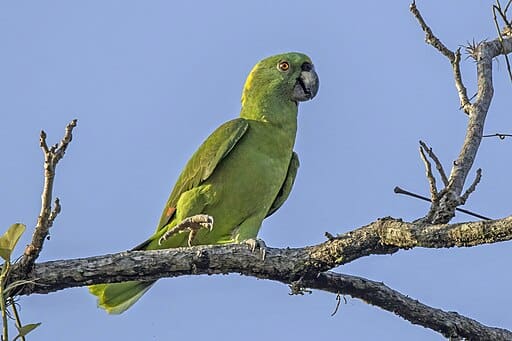Yellow-naped Amazons: Surveys
Yellow-naped Amazons are IUCN Critically Endangered in the wild. Illegal trapping for trade is the main threat to their survival; habitat loss is ongoing.
The WPT has, since 2007, supported fieldwork; studies led to the species being uplisted to IUCN Critically Endangered.
Beginning in 2021, The World Parrot Trust directly supported the research of a local Costa Rican biologist who aimed to uncover Yellow-naped Amazon population trends in the Santa Rosa region of Costa Rica. Four hundred and twenty hours of nest surveys in February-May and roost counts from June to July found a couple hundred birds at one site, with other new roosts also being discovered.
Despite this, the population in Costa Rica is still declining due to poaching, and agro-landscape changes (converting shade crops to no-shade crops) where roosts once were. Efforts to counter the declines include outreach and contact with landowners interested in having nest boxes put on their properties for the birds. It was determined that even more awareness is needed in local communities. Actions have included active protection against predators, installing nest boxes, and carrying out more nest surveys and roost counts. In 2023, the team installed 40 artificial nests and it is hoped that the Amazons will adopt some of them.
IUCN/CITES Status: Critically Endangered / Appendix I
Population: About 2600.
Range: A.a. auropalliata: Pacific slope from Oaxaca, Mexico to NW Costa Rica A.a. parvipes: Mosquitia of Honduras and NE Nicaragua A.a. caribaea: Bay Islands, Honduras
Natural history: The Yellow-naped Amazon favours deciduous forest, pine-oak woodland, gallery forest along waterways, arid to semi-arid savanna woodland, and dry scrubland with remnant woodlots or scattered trees. Birds are found in pairs or flocks with larger gatherings at communal roosts and feed areas. It feeds on seeds, figs and ripening Terminalia fruits. Bay Island birds feed on pine cones.

